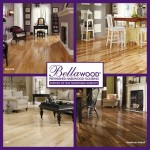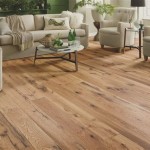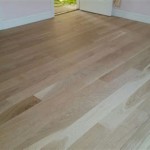Dark Wood Floor Bedroom Decor: A Comprehensive Guide
Dark wood floors offer a sophisticated and grounding foundation for bedroom design. They possess a unique ability to evoke feelings of warmth, luxury, and timeless elegance. However, effectively decorating around dark wood floors requires a thoughtful approach to balance the intensity of the flooring and create a harmonious and inviting space. This article explores key considerations and strategies for successful dark wood floor bedroom decor.
Understanding the Impact of Dark Wood Floors
Dark wood floors visually anchor a room, creating a sense of stability and depth. They absorb more light than lighter-toned floors, which can make a space feel smaller and more intimate. This characteristic is both a benefit and a challenge. The inherent drama of dark wood can be effectively leveraged to create a cozy and luxurious atmosphere, but it also necessitates careful consideration of lighting and color palettes to prevent the room from feeling oppressive or cramped. The specific species of wood, its grain pattern, and the stain used will further influence the overall aesthetic. For example, dark walnut offers a rich, formal appearance, while dark-stained oak may present a more rustic or contemporary feel.
Furthermore, dark floors tend to highlight dust and pet hair more readily than lighter surfaces. This is a practical consideration for homeowners concerned with maintaining a pristine appearance. Regular cleaning and the selection of appropriate rugs and textiles can mitigate this issue. The longevity and durability of the wood itself is also a factor. Harder wood species, like Brazilian cherry or maple, will be more resistant to scratches and dents, safeguarding the appearance of the floor over time.
Color Palette Strategies for Dark Wood Floors
Selecting an appropriate color palette is crucial for complementing dark wood floors. The key is to create a balance between contrast and harmony, ensuring the space feels balanced and visually appealing. Several strategies can be employed to achieve this balance.
One effective approach is to utilize a high-contrast palette. Pairing dark wood floors with light, neutral walls creates a striking visual contrast that prevents the room from feeling dark or confined. White, off-white, cream, and light gray are excellent choices for wall colors. These light hues reflect ample light, brightening the space and visually expanding the room. Accents of bold colors, such as jewel tones or vibrant primaries, can be incorporated through accessories like throw pillows, artwork, and decorative objects to add personality and visual interest without overwhelming the space.
Another approach involves using a monochromatic color scheme. This strategy focuses on variations of a single color, creating a cohesive and sophisticated look. For example, pairing dark wood floors with medium-gray walls and lighter-gray bedding and accessories can create a calming and elegant bedroom. Textural variations, such as incorporating velvet, linen, and knit fabrics, are essential in monochromatic schemes to add depth and visual interest. This prevents the space from feeling flat or monotonous.
A third option is to embrace a warmer, more inviting palette. This involves using earthy tones, such as beige, tan, olive green, and terracotta. These colors complement the natural warmth of the wood, creating a cozy and inviting atmosphere. This approach works particularly well in bedrooms where a sense of relaxation and comfort is desired. Incorporating natural materials, such as wood furniture, woven baskets, and linen textiles, further enhances the organic feel of the space.
Lighting Solutions for Dark Wood Floor Bedrooms
Adequate lighting is absolutely critical in a bedroom with dark wood floors. Because dark floors absorb light, the room can easily feel dim and unwelcoming if the lighting is not carefully planned. A layered lighting approach, combining ambient, task, and accent lighting, is the most effective way to create a well-lit and visually appealing space.
Ambient lighting provides overall illumination for the room. This can be achieved through various sources, such as ceiling fixtures, chandeliers, or recessed lighting. Dimmable fixtures are particularly beneficial, allowing for adjustable light levels to suit different moods and activities. Selecting fixtures with warm-toned light bulbs can help counteract the coolness of the dark floors and create a more inviting atmosphere.
Task lighting provides focused illumination for specific activities, such as reading or getting dressed. Bedside lamps are essential for reading in bed, while vanity lighting is important for grooming and applying makeup. Adjustable task lighting allows for greater flexibility and control over the direction and intensity of the light. Opting for lamps with light-colored shades can help maximize the amount of light that is emitted.
Accent lighting is used to highlight specific features of the room, such as artwork, architectural details, or decorative objects. This type of lighting adds depth and visual interest to the space. Track lighting or spotlights can be used to illuminate artwork, while uplighting can be used to accentuate architectural features. Strategically placed accent lighting can draw the eye and create a more dynamic and engaging visual experience.
In addition to artificial lighting, maximizing natural light is crucial. Keeping windows clean and free of obstructions allows for maximum sunlight penetration. Using sheer curtains or blinds allows for privacy while still allowing natural light to filter into the room. Mirrors can also be strategically placed to reflect natural light and brighten the space.
Furniture Selection and Placement
The selection and placement of furniture plays a significant role in the overall aesthetic of a bedroom with dark wood floors. The goal is to create a balanced and harmonious space where the furniture complements the floors and contributes to the overall design vision.
When selecting furniture, consider the scale and proportion of the pieces in relation to the size of the room. Avoid overcrowding the space with too much furniture, as this can make the room feel cramped and claustrophobic. Opt for fewer, larger pieces of furniture that make a statement. For example, a large upholstered bed can serve as the focal point of the room, while smaller side tables and dressers provide functional storage without overwhelming the space.
The style of the furniture should also complement the overall design aesthetic. For a traditional bedroom, consider using classic furniture pieces with ornate details and rich finishes. For a more contemporary bedroom, opt for sleek, minimalist furniture with clean lines and neutral colors. Mixing and matching different styles can create an eclectic and visually interesting space, but it is important to maintain a sense of balance and cohesion.
The placement of furniture is just as important as its selection. Consider the flow of traffic in the room and arrange the furniture to create a comfortable and functional layout. Avoid blocking doorways or windows with furniture, as this can impede the flow of traffic and block natural light. Position the bed as the focal point of the room, and arrange the other furniture pieces around it in a balanced and symmetrical manner. Using rugs to define different areas of the room can also help to create a more cohesive and organized space. A large area rug placed under the bed can anchor the space and add warmth and texture to the room.
Consider using lighter-toned furniture to create contrast against the dark wood floors. Light-colored upholstery, such as white linen or beige velvet, can brighten the space and create a more airy and inviting atmosphere. Wood furniture with light finishes, such as natural oak or painted white, can also provide a visual contrast to the dark floors. Incorporating metallic accents, such as brass or silver hardware, can add a touch of glamour and sophistication to the space.
Rugs and Textiles: Adding Warmth and Texture
Rugs and textiles are essential elements in a bedroom with dark wood floors. They add warmth, texture, and visual interest to the space, while also helping to define different areas of the room. Carefully selecting rugs and textiles can significantly enhance the overall aesthetic and create a more inviting and comfortable atmosphere.
When selecting rugs, consider the size, shape, and material of the rug in relation to the size and layout of the room. A large area rug placed under the bed can anchor the space and provide a soft and comfortable surface to walk on. Smaller rugs can be used to define specific areas of the room, such as a reading nook or a vanity area. The shape of the rug should complement the shape of the room and the furniture arrangement. A rectangular rug works well in a rectangular room, while a round rug can soften the corners of a square room.
The material of the rug should be durable and easy to clean. Wool rugs are a popular choice for bedrooms, as they are soft, durable, and naturally stain-resistant. Synthetic rugs, such as nylon or olefin, are also a good option, as they are more affordable and resistant to fading and mildew. Consider the pile height of the rug, as this can affect its comfort and maintenance. A high-pile rug is soft and plush but may be more difficult to clean, while a low-pile rug is easier to clean but may not be as comfortable to walk on.
Textiles play a crucial role in adding warmth and texture to the bedroom. Layering different textures, such as velvet, linen, and knit fabrics, can create a cozy and inviting atmosphere. Use throw pillows, blankets, and curtains to add color and pattern to the space. Consider using lighter-colored textiles to create contrast against the dark wood floors. White linen bedding, for example, can brighten the space and create a more airy and inviting atmosphere. Curtains can also be used to add privacy and block out unwanted light. Opt for curtains that are lined to provide better insulation and light control.
Incorporating natural materials, such as wood, wool, and linen, can further enhance the organic feel of the space. Woven baskets, wooden furniture, and linen textiles can add texture and warmth to the room. Consider using textures that contrast against the dark wood floors, such as a shag rug or a chunky knit blanket, to create visual interest.
Accessorizing a Dark Wood Floor Bedroom
The final touch in creating a well-designed bedroom with dark wood floors is the addition of carefully curated accessories. Accessories add personality, visual interest, and help to tie the entire space together. The key is to select accessories that complement the overall design aesthetic and create a harmonious and inviting atmosphere.
Artwork is an essential accessory for any bedroom. Choose artwork that reflects your personal style and complements the color palette of the room. Large-scale artwork can make a statement and serve as a focal point, while smaller pieces can be grouped together to create a gallery wall. Consider using light-colored frames to create contrast against the dark walls. Mirrors are another great accessory for bedrooms. They can reflect natural light, making the space feel brighter and more open. Mirrors can also be used to create visual interest and add depth to the room. Consider placing a large mirror on a wall or using smaller mirrors to create a gallery wall.
Plants can add life and vibrancy to a bedroom. Choose plants that are easy to care for and thrive in low-light conditions. Potted plants can be placed on shelves, dressers, or bedside tables. Hanging plants can also be used to add visual interest and create a more dynamic space. Decorative objects, such as vases, sculptures, and candles, can add personality and visual interest to the room. Choose objects that complement the overall design aesthetic and reflect your personal style. Group objects together to create vignettes that tell a story. Books are another great accessory for bedrooms. They can be stacked on shelves, placed on bedside tables, or used as decorative accents. Choose books that you enjoy reading and that complement the overall design aesthetic.
Lighting fixtures, such as lamps and sconces, can also be used as accessories. Choose lighting fixtures that are both functional and stylish. Lamps can be placed on bedside tables to provide task lighting for reading, while sconces can be used to add ambient lighting to the room. Choose lighting fixtures that complement the overall design aesthetic and create a warm and inviting atmosphere.

25 Bedrooms That Celebrate The Textural Brilliance Of Stone Walls

Decorating Rooms With Dark Floors And Gray Walls The Flooring Girl

75 Primary Bedrooms With Hardwood Flooring Photos

25 Dark Wood Bedroom Furniture Decorating Ideas

Charming Wooden Floor Designs For Updating Your Bedroom Interior Beautiful Homes

40 Dark Hardwood Floors That Bring Life To All Kinds Of Rooms

75 Dark Wood Floor And Black Bedroom Ideas You Ll Love May 2025 Houzz

5 Tips To Pair Dark Floors With Light Walls Real Wood

Modern Bohemian Bedroom Makeover And Our Wood Floors Jennifer Rizzo

20 Dark Bedroom Ideas To Inspire A Moody Retreat
Related Posts








